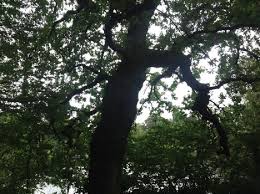Trees ‘retrofit our cities for happiness,’ forester says

Trees play a special, though somewhat contradictory role in the human psyche. Among the first thing Mormon pioneers did upon reaching the treeless Salt Lake Valley in 1847 was plant crops, but also the trees that became Utah’s first urban forest.
“This is an impressive story of how a forest city can be developed. It shows how the relationship between forest and city doesn’t have to be a negative one,” and Cecil Konijnendijk, a Dutch forester addressing an international research conference Saturday at the Salt Palace convention center.
He described how the residents of one long-suffering Dutch city, following World War II, quickly replanted an ancient birch forest Nazi occupiers had razed to launch V-2 rockets against England.
Konijnendijk said forests in and around urban areas exemplify the resilience of cities through history and cement their role as places of creativity, diversity and freedom.
“Urban forestry has a very long heritage,” Konijnendijk said. “We as urban foresters are in the business of creating happiness.”
The head of the landscape architecture department of the Swedish University of Agricultural Sciences, Konijnendijk was the last of many speakers to address the International Union of Forestry Research Organization. The IUFRO wrapped up its world congress Saturday after a week of technical sessions, field trips and exhibitions.
The congress, staged only once every four or five years, brought 3,000 researchers from more than 100 nations. The last time the United States hosted was 1971.
Bridging science and management is an important goal of the congress because these two wings of the forestry community must work together if it is figure out how forests can be used in sustainable ways, according to Nalini Nadkarni, a University of Utah biology professor and pioneer in the study of forest canopies as ecosystems.
Salt Lake City proved to be an ideal American host city because it is so close to expanses of gambel oak, Douglas fir and limber pine stretching up the Wasatch Mountains. Organizers rented every available bus in northern Utah to ferry attendees on dozens of field trips Wednesday into various woods.
The Uinta-Wasatch-Cache National Forest at the city’s doorstep is no longer a source of wood products, but is known for something far more important, according to congress co-chairman Richard Guldin of the U.S. Forest Service.


Recent Comments